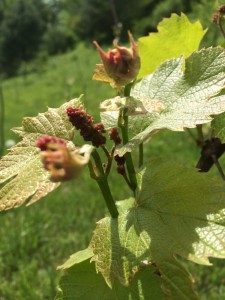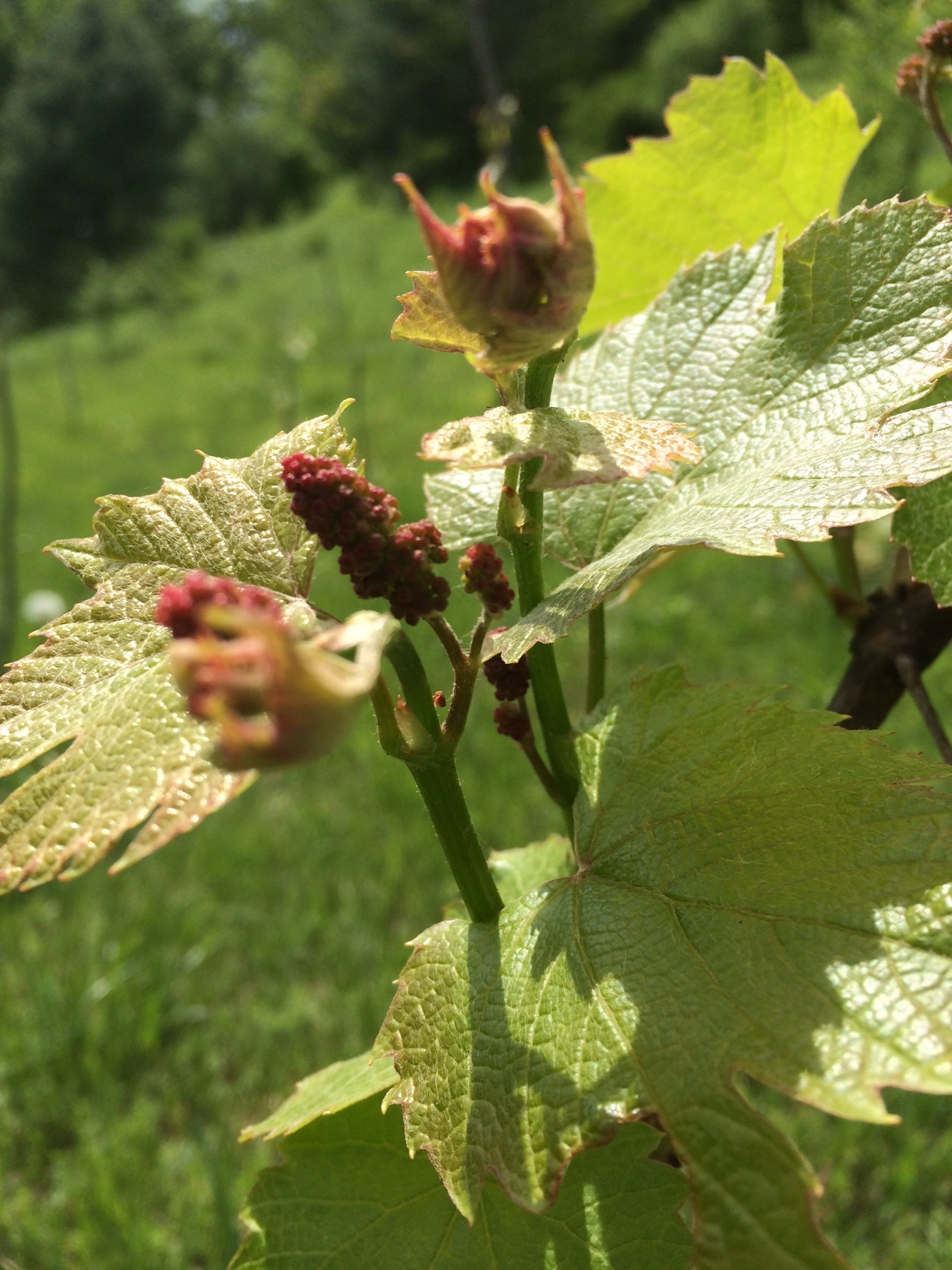
La Crosse is a grape from the cold climate quiver that is a pet favorite of mine. Having worked with it in the Cornell trial vineyard and in and the home winery for a few vintages, I’m intrigued by what smells and tastes like potential. It’s yet another of the Elmer Swenson-propagated diaspora of hybrid vines which offer options and hope to winemakers who grow and press in places that are USDA Zone 5 and below. A complex hybrid offspring of Seyval Blanc, and named for the Wisconsin city on the Mississippi, it offers some improvements upon its parent, and maybe has the potential for even more complex utility in the winery.
Swenson brought up this hybrid around 1970 and released in 1983. It is one of the few of his grape children to have been patented. It’s actually quite remarkable that it even came into being, when one ponders that it is a genetic melange of Vitis riparia, labrusca, vinifera, lincecumii, and rupestris…all mingled by a Wisconsin dairy farmer who bred grapes in his spare time(!), until he could retire to a full-time job as a horticulturalist for the University of Minnesota.
La Crosse is a vigorous vine that carries a sizable crop , as we have seen at the trial and has been reported by others. It ripens earlier and is more cold-hardy than Seyval. While it can handle temps to -25F, as it did at my place this past winter, it is susceptible to the litany of rots and mildews that plague grapes of all species. This can present a challenge in the wet conditions that we sometimes experience, so it is vineyard management, canopy air flow, and appropriate pest management practices, as usual.
These berries love to give up their juice, and with their thin skins, lug harvesting and transport seems to make sense. Dumping them into a one ton bin in the field could lead to a lot of free run wine pressed by its own weight before it even gets to the winery. The wine produced has some earthy and herbaceous notes like Seyval but also seems to present much more fruit forward. Like some of the other North Country whites, it presents more pomme and stone fruit when quite ripe (think midwest), and turns more citrus in cooler situations (northeast).
I pulled three samples of La Crosse we made from harvests at the Baker Farm trial vineyard to compare.
[box_light]
2013 ( wet start late dry summer - still in carboy ) - crazy lemon freshness of Mr. Clean without the chemicals, and lime juice, both silky and snappy, leaves a salivating honeydew rind tracer.
2012 ( great! summer ) honeysuckle lemon lime and salt marsh, round light slightly oily texture with just a hint of effervescence, citrus fruit, the bright green lingering lines I associate with Chablis, but softens to a spicy kiwi.
(Lenn Thompson made notes on this wine for What We Drank July 16, 2013)
2010 ( hot summer ) lemon drop, brine and hot pavement, border on petrol. Soft fore-palate, wide edgy stone fruit but acidity still holding center, fades into green apple skin and lime peel. When I gave this one to an Italian wine importer a couple of years ago, he thought that if presented blind, he would have called it for a cool climate Mediterranean island wine.
[/box_light]
This is the first time that I’d sat with these three vintages from the same plot, made under similar protocols. Before now I’d not made the the shiny lime connection between them. It necessarily reminds me of the green citrus and mineral Victory View Vineyard version of La Crosse that I tasted recently in Saratoga, where Gerry Barnhart does his Upper Hudson Valley white in a style that says semi-dry on the label but slants well towards dry with bright fruit notes. Lean crisp, fresh, lightly oaked but barely apparent. It goes through malo-lactic fermentation but it does not diminish the wine’s crispiness.
The folks at Hid-in-Pines Vineyard near Plattsburgh make a La Crosse in what is decidedly a semi-sweet style. It is received quite well, and maybe it is the Lake Champlain “banana belt” climate up there, but it is far more round apple, pear, and stone fruit than either ours or Victory View’s. There is more out there in the North Country but none that is being bottled as a varietal. I know of at least a couple of places in NY and VT that employ La Crosse in proprietary blends.
I have a personal fantasy about learning the Portuguese process of making white wines like those of Vinho Verde, and trying them with La Crosse. The low to moderate alcohol levels, and the bright fresh fruit, make me think that more than just hint of effervescence might work. We need more folks experimenting with this one. La Crosse gets a lot of play in the mid-western states, and I hope it starts to catch on here too. Anyone currently growing Seyval could do well to consider adding La Crosse to their mix.

